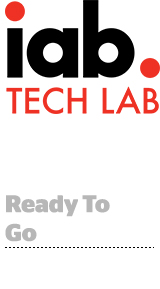 Here’s today’s AdExchanger.com news round-up… Want it by email? Sign up here.
Here’s today’s AdExchanger.com news round-up… Want it by email? Sign up here.
Open For Business
The IAB Tech Lab made its Open Measurement SDK generally available Tuesday after a seven-month beta. App publishers are embracing it with open arms. To meet all buyers, apps previously needed as many SDK integrations as there were viewability vendors – which meant separate integrations for Integral Ad Science, Moat and DoubleVerify, at the very least. But it’s “untenable and impossible for an app developer to install every single measurement vendor’s SDK into their app,” said Maria Breza, senior director of platform operations at Pandora, on stage at AdExchanger’s Programmatic IO conference in San Francisco on Tuesday. But advertisers were “getting a lot of pressure” to only target environments with third-party verification, Nicole McCormack, Flipboard’s SVP of revenue and ops, tells AdExchanger. The Open Measurement (OM) SDK lets apps work with multiple verification companies through a single integration. “With the OM SDK, we’ll have one solution and can remove previous SDK implementations for viewability out of the app,” says McCormack, who sits on the IAB Tech Lab working group that developed the SDK. More.
A Word Of Advice
Facebook may have popularized the native ad format, but the way the platform vets, ensures quality and discloses its native ad units falls far behind the efforts of news publications, Nativo CEO Justin Choi writes for the Philadelphia Inquirer. Nativo’s native ad platform, used by The New York Times, The Atlantic, Hearst and more, employs human vetting on both sides of the transaction to identify the advertiser, reviews each ad to ensure no claim is false or misleading and requires all ads to be labeled as sponsored content. Facebook’s efforts in vetting and disclosure are “a pittance” compared to its overall ad load and “an afterthought, at best,” writes Choi, who says the platform needs explicit disclosures and more human oversight on every transaction to fix its advertising problems. “Native advertising has introduced a new dimension to this, with the blurring of lines between advertising and editorial,” Choi writes. “That makes disclosure and direct relationships more important than ever.” Read it.
Date Night Or Data Night?
Many US consumers are asking themselves and tech companies the same question: “What data am I giving up?” The Wall Street Journal walks readers through the planning of pizza and a movie to show just what’s collected during routine activities supported by smartphones and voice-activated devices. Unsurprisingly, Google Maps collects location and destination data when users create driving directions, but few realize how much extraneous data is absorbed during the trip, including nearby cell towers and Wi-Fi routers, the speed and cardinal direction of travel and the mobile IP address. Uploading a selfie to Facebook may seem like a data-free action, but the social platform analyzes the photo content for brand and interest-based imagery (such as holding a Budweiser at a stadium), Bluetooth signal, nearby internet-connected devices, battery level, signal strength, available storage, time zone, on-device apps, internet service provider and mobile OS. More.
Here To Stay
Agency M&A has increased 126% during the past year to reach a total deal value of $4.6 billion. But data from consulting group R3 indicates the biggest acquirers weren’t agency holding companies. Consultants and private equity firms drove agency acquisitions and deal values, with Accenture Interactive and CapGemini leading among consultants and Ocelot Partners, Mill Pond and KKR being the top equity backers. Just 14% of agency deals were made by holding companies. “The consultants – and other non-traditional buyers – are taking the lion’s share of the assets,” said Greg Paull, principal of R3. “The holding groups have their own internal challenges – along with those from their shareholders – and it means that more than enough other investors are stepping in.” Read the report.
But Wait, There’s More!
You’re Hired!
This post was syndicated from Ad Exchanger.

More Stories
Owen Wilson Does His Best Steve Jobs Impression for a Beauty Startup Ad
Meta’s Ad Business Is Still Surging As Headcount Ticks Upward
Island Gelato partners with Impact PR